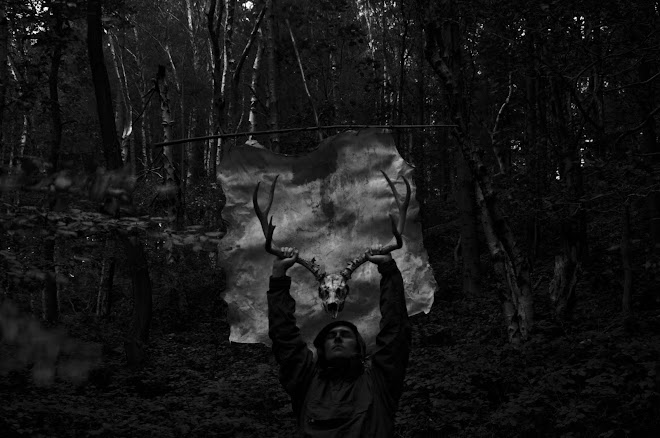


There are some places so special, so alive that one hesitates to write of them lest it erode their sanctity. There are trees so ancient that they stood before Christ came to these islands. The massive first forests that once covered the land are now slivers of green winding along narrow valley bottoms. They have been grubbed up, tore down and tarmaced over for super-markets, industrial estates and horrible, soul destroying houses but echoes of the past still remain. Not wild but not yet managed, fallen into blissful neglect and allowed to return to self seed and a kind of genteel wilderness in which fallen trees rot slowly back to earth and windfalls form ad-hoc dams over slow lazy streams.
These places are few and far between and when you find one you know it by the rise in the hairs on the back of your neck and the still hush that falls as you enter. They are not new, bright woodlands. They are not easily accessed by the fly-tipper or the casual arsonist. They are hidden away in secret pockets, in folds of the lands protected by stone and water. They can be glimpsed from the windows of speeding trains and entered quietly through fields and forgotten paths but these hemmed-in strips of woodland are time-machines that can call the willing back to the land as it was, doors into Elphame that still open for those who knock though the way is hard and shrinking every day.
The woodland that wraps around Croxdale Beck has this character. A long, thin green snake of mixed broadleaf and conifer that winds along the valley, bordered on all side by farm land and with the busy East Coast mainline running through it for a short distance. In it’s upper stretches, where the beck runs swiftly over small rocky pavements and undercuts banks held in place by networks of ash and sycamore roots the woodland is open and light, a delicate scent of wild garlic just beginning to perfume the valley in the warmth of a sunny day in late March. The paths are broad and clear although seemingly seldom tread, there are no ruts made by mountain bikes, no wayside deposits left by carefree dog-walkers and very little litter, except for the ubiquitous pieces of plastic caught in the waterside branches to show the high water mark of the last flood.
This is an empty and forgotten woodland, a long way from the nearest settlement and on the way to nowhere in particular there is no reason for people to visit, unless they want to walk quietly along its neglected paths and peer into the depths of the pools. Somewhere ahead of me a pheasant is noisily alarming. I look down the trail but cannot see the bird, from the quality of the sound it appears to be too far ahead to have been disturbed by my presence. As I entered the wood further back another pheasant had silently sloped away into the undergrowth with that exaggerated chicken-run gait these birds adopt when they want to make themselves scarce so I know pheasants. Whatever is alarming this bird it seems to be further into the wood. I carry on down the trail, stopping to watch wrens flitting around an old stone wall and to look for the chub and dace that were restocked into the beck a few years ago.
Suddenly to my right, on the other side of the beck three Roe make a break from their cover and run back upstream, crashing through the undergrowth and making small goat-like caprioles over fallen trees. It happens so fast that I barely have time to lift the camera and snap off a picture, hoping for the best as their white rumps disappear into the woods. By now it’s obvious that the path I’m following was once a canalised channel, its high walls overgrown with ash saplings and its stone lined bottom a grassy green lane. As the canal-path continues down through the wood the stonework becomes larger and more impressive showing sluice gates and the remains of a long forgotten mill overgrown by trees and brambles. There is rock everywhere, warm orange sandstone poking through the thin sandy soil. The valley is deepening, the rocky outcrops are becoming higher and more impressive and the beck begins to loop in larger and deeper coils about the flanks of the hill, cutting down to reveal cliffs hung with moss and saplings, the stream rippling and rolling over small waterfalls and rapids.























